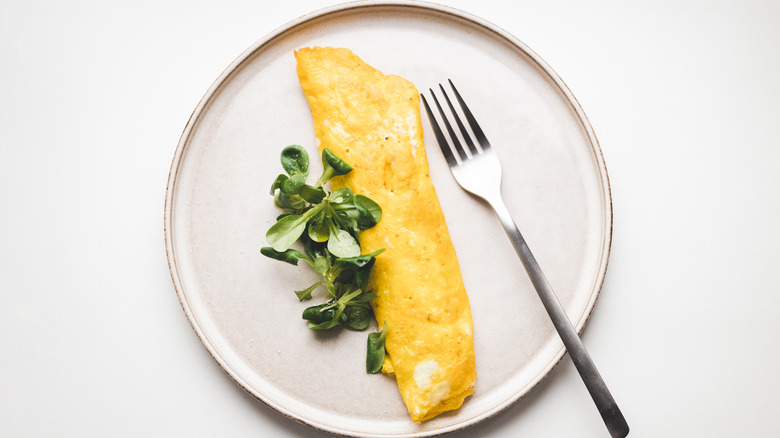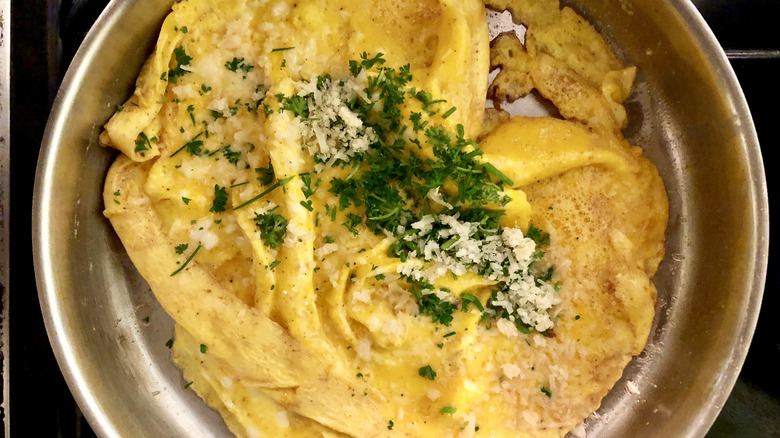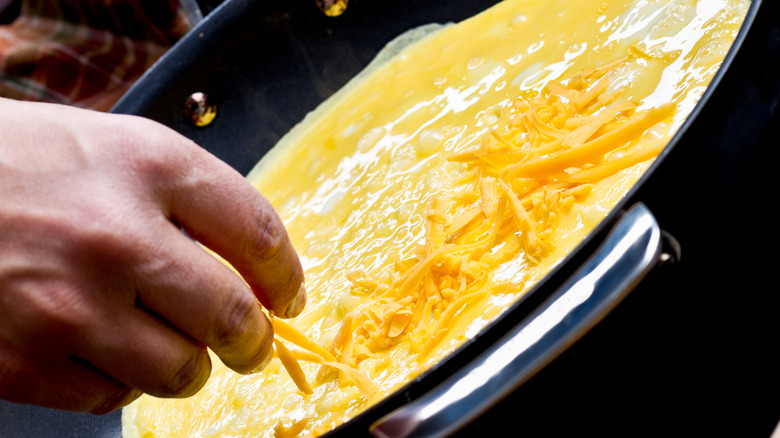For The Perfect French Omelet, Low And Slow Is The Key
When it comes to delicious dishes, few regions are as highly regarded as France. The country is famous for its cuisine, and this reputation is well deserved, as France has been at the forefront of food for hundreds of years. The European nation's culinary achievements have stood the test of time, and in a similar fashion, when you're cooking French food, time is of the essence.
The simple dish that may best exemplify that is a showcase of the benefits of careful cooking. It might also be the food with the most recognizable name. French egg dishes require a delicate touch, and frying up the perfect French omelette (or omelet, if you're American) is merely a matter of patience. Once you put your eggs in a pan, the time clock is set, and you'll embark on an egg-cooking journey that involves several time-consuming steps but results in a scrumptious and surprisingly soft omelet.
French omelets are a labor of love
The influence of French food has echoed throughout the world, and, as such, American cuisine has heavily adopted its flavors. However, there is unquestionably a difference between the two countries concerning the act of cooking eggs. Even French and American scrambled eggs are considered different. Americans cook their eggs for longer, with the scramble often winding up dense and dehydrated, while the French take the time to allow the eggs to curdle and cook over time, which results in an incredibly smooth scramble.
A similarly painstaking process is required when you're cooking up a French omelet. After you've introduced the eggs to a low-heat skillet, you need to continuously stir the eggs as they heat through, making sure to move the bits of egg that are at risk of overcooking back into the egg bath. Once you've begun rolling your French omelet, you'll once again need to use a delicate touch and only loosely wrap the eggs up so that the omelet doesn't become overcooked.
Other tips for a perfect French omelet
All in all, though there are myriad components that go into making the perfect French omelet, every strategy centers around the descriptors low and slow. Every recipe calls for an abundance of butter, which gives the omelet its signature smooth texture, and butter begins to smoke at 350 degrees Fahrenheit. This means that a French omelet must necessarily be cooked on low if you're going to avoid a smoke-filled kitchen.
After you've finished your French omelet, another few exercises in careful cooking still stand between you and enjoying these delicious eggs. Allow your omelet to sit in the skillet with the heat off, which allows the eggs to keep cooking without drying out. You'll also want to finish it off with a spread of the aforementioned butter, which will give your omelet an aesthetically appealing shine. The perfect French omelet can only be achieved if you take your time.


